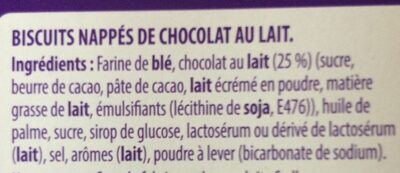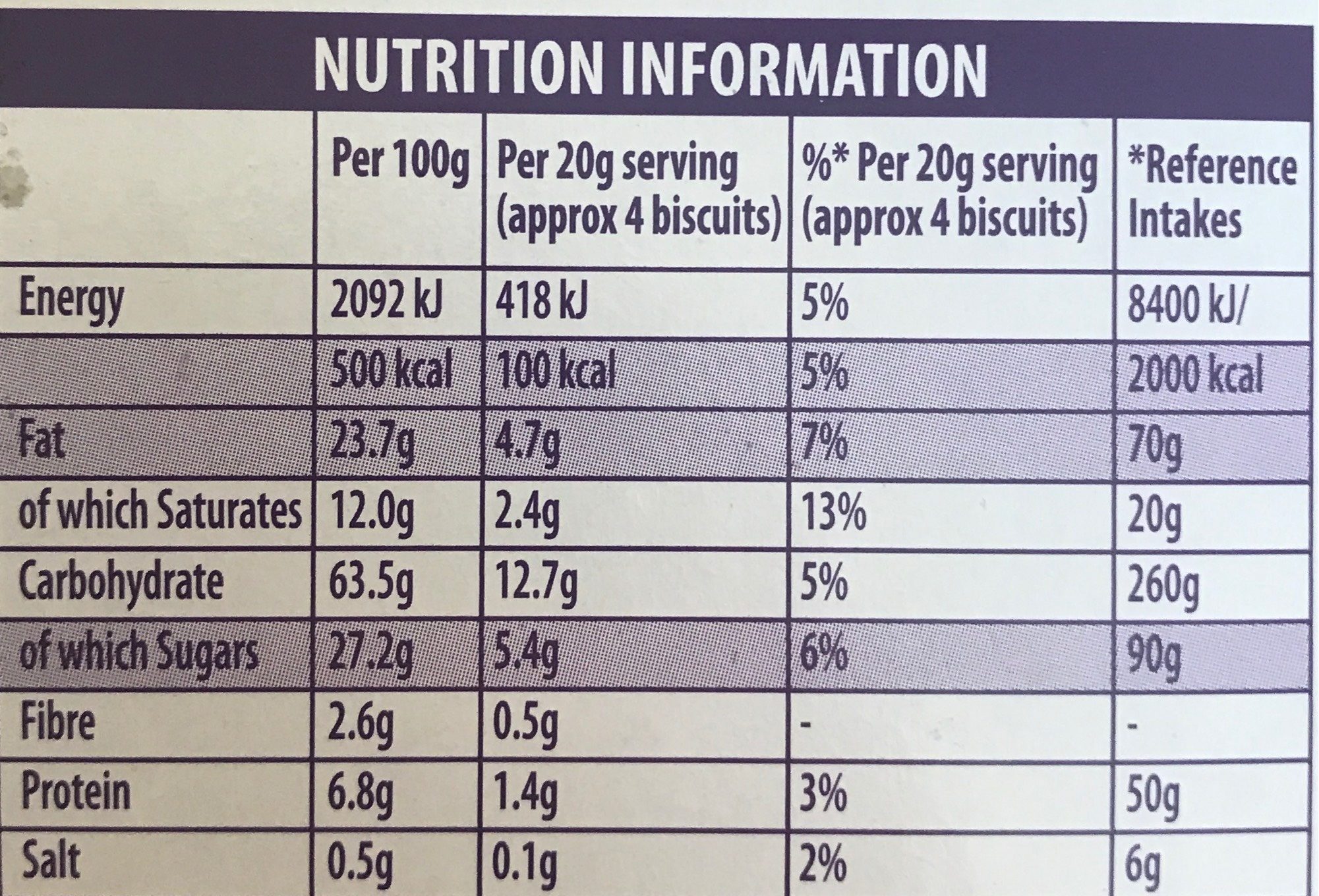Z'animo - Cadbury - 200 g
This product page is not complete. You can help to complete it by editing it and adding more data from the photos we have, or by taking more photos using the app for Android or iPhone/iPad. Thank you!
×
Barcode: 0072417146831 (EAN / EAN-13) 072417146831 (UPC / UPC-A)
Common name: Biscuits sablés nappés de chocolat au lait Cadbury
Quantity: 200 g
Packaging: Plastic, Bag, Cardboard
Brands: Cadbury
Categories: Snacks, Sweet snacks, Biscuits and cakes, Biscuits, Chocolate biscuits, Milk chocolate biscuits, Shortbread cookies
Labels, certifications, awards: Vegetarian
Stores: Cora
Countries where sold: France
Matching with your preferences
Environment
Carbon footprint
Packaging
Transportation
Report a problem
Data sources
Product added on by tacite
Last edit of product page on by packbot.
Product page also edited by autorotate-bot, kiliweb, nouky20, openfoodfacts-contributors, upcbot, yuka.RjYxZEdhbzdvOE1XbnNKajdoaUY1K0l1bWFPRlhHYTFOK1VzSVE9PQ, yuka.RzZNRFNyVTRtZU0zc2NNbXB5M2wwOWg4L01EelVqS3pkOWN5SVE9PQ, yuka.SDdnK0RhQW1nT2Ntb1BFVDJ6R04vZEJONEx1UEJ6Nk5kTHNXSVE9PQ, yuka.U2FjQkFJQWIrTnBRa2RzandVUHA4T2hibDUvd1VUcXpOdXdzSVE9PQ, yuka.UUlkYlRLa2RoOVVKbXZJRDVpdnkzK3RvNGFMelRIK1pJTWdiSVE9PQ, yuka.UUlrN0s0RmNxdFUwa2ZRaTh4YlFvdmh4bjVpV1VGM3JNcnBBSUE9PQ, yuka.VnEwaEFLVXdtOTA3b3ZFSDhTTFk1dWh2bDc2UlgxM29LUGdPSVE9PQ, yuka.VzRVQUxJTUNxdjRqb3NZdXhnSFp5czlsdzRXN1dVR3BDTVFvSVE9PQ, yuka.WDZwYk9yd091Tm9SeGNFaXh5ang0dThzbHIzMFUxdVVFTWNjSVE9PQ, yuka.WFBwUlRvZ2txT1pibTlzRnhpbnh3djlIbXBPelVFaWRDK1ZKSVE9PQ, yuka.WUp3REFZNGpnYWdzdXM5bjdDckgzOXhXdzZhMVdrS3NLN29SSWc9PQ, yuka.WnA0U1NvY3VpTm95cGM4MDRqRFYvdDVQOVk2RmZFcXNJTk1qSVE9PQ, yuka.YUlVOURyd01pZndEdWZRQy9pbnMwOXRQNW82eGZHZUhKL2hJSUE9PQ, yuka.YVlNWkM3WWdtdlpTeE5nZzdCejBwdk42MTRPU1VqS2JHYm9XSVE9PQ, yuka.ZUp3UExKMGUrTmdZdE1VaXJrNkYrWWxONUoreVFGK0tOZG92SVE9PQ, yuka.ZW9kYVBxb091OFFMaGRzRzR5bU00ZWxNL0oreFFFU0ZOKzFOSVE9PQ, yuka.ZW9vN0NLbzgrZGt5ZzhOdW9oRG4yOGd0NDVTWVhIS3pOTzB4SVE9PQ, yuka.ZWJ3R05ZMFJ1T2NTdXZaa3h4UFYvL3hFbmJPVVlqaVBFY0JKSUE9PQ, yuka.ZXFVL0hJVVRoL3dZb2RzODRrMzI1dTUyKzhTdmUwV1JMOVlVSVE9PQ, yuka.ZllVeU5mMC9xZU1xbWNZbXpnT0U4UFZ0bXB1VWZqcVJFT294SVE9PQ.










